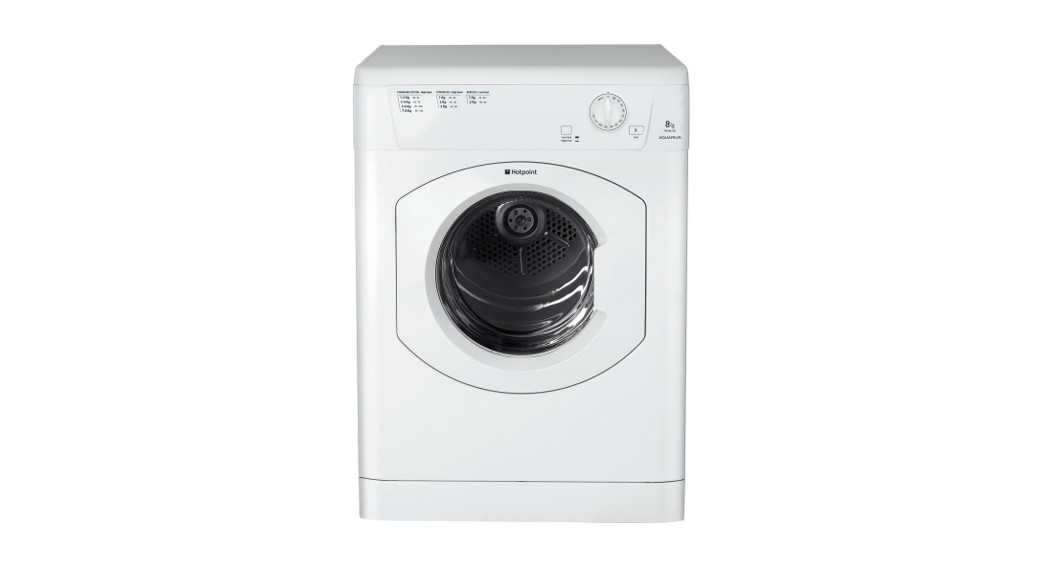Quick Guide THANK YOU FOR PURCHASING A HOTPOINT PRODUCT. To receive more comprehensive assistance, register the appliance onwww.hotpoint.eu/register
THANK YOU FOR PURCHASING A HOTPOINT PRODUCT. To receive more comprehensive assistance, register the appliance onwww.hotpoint.eu/register
Before using the appliance carefully read the Health and Safety guide.![]() Before using the machine, it is imperative that the transport bolts are removed. For more detailed instructions on how to remove them, see the Installation Guide.
Before using the machine, it is imperative that the transport bolts are removed. For more detailed instructions on how to remove them, see the Installation Guide.
CONTROL PANEL
- ON/OFF button
- KEY LOCK button
- EXTRA TOUCH button
- EXTRA TOUCH indicator lights
- START/PAUSE button and indicator light
- OPTIONS button and indicator light
- DELAY START button
- SPIN button
- TEMPERATURE button
- WASH CYCLE SELECTOR KNOB

WASH CYCLE TABLE
| Maximum load 7 kgPower input in off mode 0.5 W / in left-on mode 8 W | Detergents andAdditives | Recommendeddetergent | Residualdampness % | EnergyconsumptionkWh | Total water It | Laundrytemperature | |||||||
| Wash cycle | Temperature | Maximumspin(r.p.m.) | Max.load(kg) | Duration(I, : ri.11“‘ ‘ | Wash | Fabricsoftener | Powder | Liquid | |||||
| Setting | Range | 2 | 3 | ||||||||||
| Mixed | 40°C | 0 – 40°C | 1400 | 7,0 | ** | • | 0 | – | V | – | – | – | – |
| Eco 40-60 (1) | 40 °C | 40°C | 1351 | 7,0 | 3:25 | • | 0 | V | V | 53 | 0,95 | 48 | 43 |
| 1351 | 3,5 | 2:42 | • | 0 | V | V | 53 | 0,62 | 45 | 33 | |||
| 1351 | 1,75 | 2:42 | • | 0 | V | V | 53 | 0,38 | 39 | 25 | |||
| Cotton (2) | 40°C | 0 – 60°C | 1400 | 7,0 | 3:40 | • | 0 | V | V | 53 | 0,98 | 75 | 45 |
| Synthetics (3) | 40°C | 0 – 60°C | 1200 | 4,0 | 2:55 | • | 0 | V | V | 35 | 0,86 | 60 | 43 |
| Delicates | 40°C | 0 – 40°C | 1000 | 4,0 | • | 0 | – | V | – | – | |||
| Wool | 40°C | 0 – 40°C | 800 | 1,5 | ** | • | 0 | – | V | – | – | – | |
| Anti Allergy | 60°C | 40°C – b0°C | 1400 | 4,0 | “ | • | 0 | V | V | – | – | – | |
| Spin & Drain* | – | – | 1400 | 7,0 | ** | – | – | – | – | – | – | ||
| Rinse & Spin | – | – | 1400 | 7,0 | ** | – | 0 | – | – | – | – | – | – |
| Baby | 40°C | 0 – 40°C | 800 | 3,0 | ** | • | 0 | – | V | – | – | – | – |
| 20°C | 20°C | 0 – 20 °C | 1400 | 7,0 | 1:50 | • | 0 | – | V | 52 | 0,16 | 64 | 22 |
| Duvet | 30°C | 0 – 30°C | 1000 | 3,0 | • | 0 | – | V | – | – | – | – | |
| White | 40°C | 0 – 90°C | 1400 | 7,0 | 1:40 | • | 0 | V | – | 52,1 | 0,65 | 66 | 42 |
| 30 min | 30°C | 0 – 30°C | 800 | 3,5 | 0:30 | • | 0 | – | V | 73 | 0,19 | 31 | 27 |
| Full Load 45 min | 40°C | 0 – 40°C | 1200 | 7,0 | ** | • | 0 | V | – | – | – | – | |
| Anti Stain 40° | 40°C | 0 – 40°C | 1400 | 7,0 | ** | • | 0 | – | V | – | – | – | – |
| •Required dosage 0 Optional dosage |
The cycle duration indicated on the display or instruction manual is an estimate based on standard conditions. The actual duration may vary in relation to several factors, such as the temperature and pressure of the incoming water, ambient temperature, amount of detergenload quantity and type, load balancing and any additional options selected. The values given for programmes other than the Eco 40-60 programme are indicative only.1) Eco 40-60 – Test wash cycle in compliance with EU Ecodesign regulation 2019/2014. The most efficient programme in terms of energy and water consumption for washing normally soiled cotton laundry.Note: spin speed values shown on the display can slightly differ from the values stated in the table.
PRODUCT DESCRIPTION
- Top
- Detergent dispenser drawer
- Control panel
- Handle
- Porthole door
- Drain pump (behind the plinth)
- Plinth (removable)
- Adjustable feet (2)
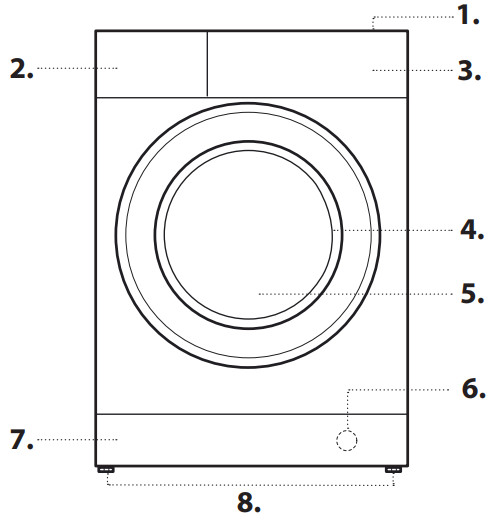
For all testing institutes:
- Long cotton cycle: set programme Cotton at temperature 40°C.
- Long synthetics cycle: set cycle Synthetics at a temperature of 40°C.* By selecting the Spin & Drain cycle and excluding the spin cycle, the washing machine will drain only.** The duration of the wash cycles can be checked on the display.*** If the “Steam Hygiene” option is set, the duration of the wash cycles will increase.**** After programme end and spinning with maximum selectable spin speed, in a default programme setting.
DETERGENT DISPENSER DRAWER
Compartment *:Do not insert detergent in this compartment.Compartment 1: Washing detergent (powder or liquid)If liquid detergent is used, the removable plastic partition A (supplied) should be used for proper dosage.If powder detergent is used, place the partition into slot B.Compartment 2: Additives (fabric softeners, etc.)The fabric softener must not exceed the “MAX” level.! Use powder detergent for white cotton garments, for pre-washing, and for washing at temperatures over 60°C.! Follow the instructions given on the detergent packaging.
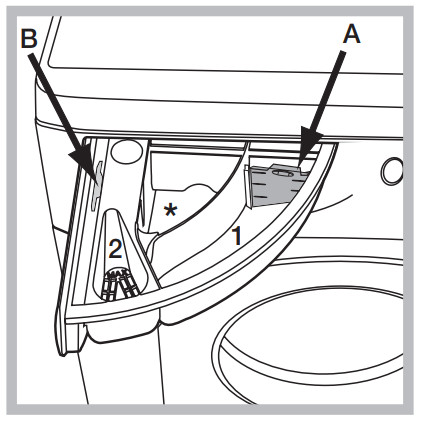
WASH CYCLES
Follow the instructions on the symbols of the garment’s wash care label. The value indicated in the symbol is the maximum recommended temperature for washing the garment.
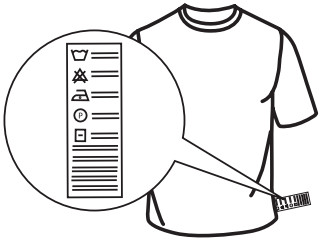 MixedFor washing lightly to normally soiled resistant garments in cotton, linen, synthetic fibres and mixed fibres.Eco 40-60For washing normally soiled cotton garments are declared to be washable at 40 °C or 60 °C, together in the same cycle. This is the standard cotton programme and the most efficient in terms of water and energy consumption.CottonSuitable for washing towels, underwear, table cloths, etc. made of resistant linen and cotton that are moderate to heavily soiled.SyntheticsSuitable for washing moderately soiled garments made of synthetic fibres (e.g. polyester, polyacrylic, viscose, etc.) or mixed synthetic-cotton fibres.DelicatesSuitable for washing lightly soiled garments made of synthetic fibres (e.g. polyester, polyacrylic, viscose, etc.) or mixed synthetic-cotton fibres.
MixedFor washing lightly to normally soiled resistant garments in cotton, linen, synthetic fibres and mixed fibres.Eco 40-60For washing normally soiled cotton garments are declared to be washable at 40 °C or 60 °C, together in the same cycle. This is the standard cotton programme and the most efficient in terms of water and energy consumption.CottonSuitable for washing towels, underwear, table cloths, etc. made of resistant linen and cotton that are moderate to heavily soiled.SyntheticsSuitable for washing moderately soiled garments made of synthetic fibres (e.g. polyester, polyacrylic, viscose, etc.) or mixed synthetic-cotton fibres.DelicatesSuitable for washing lightly soiled garments made of synthetic fibres (e.g. polyester, polyacrylic, viscose, etc.) or mixed synthetic-cotton fibres.
Wool – Woolmark Apparel Care – Green:The “Wool” wash cycle is approved by the Woolmark Company for washing wool garments classified as “hand-washable”,provided that the wash complies with the instructions appearing on the garment’s label and with those provided by the manufacturer of this washing machine. (M1126)
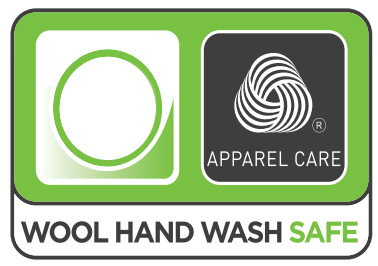
Anti AllergySuitable for removing major allergens such as pollen, mites and cat ordog hair.Spin & DrainSpins the load then empties the water. For resilient garments. If youexclude the spin cycle, the machine will drain only.Rinse & SpinRinses and then spins. For resilient garments.BabyUse the special wash cycle to remove the soiling typically caused by babies, while removing all traces of detergent from nappies in order toprevent the delicate skin of babies from suffering allergic reactions. The cycle has been designed to reduce the amount of bacteria by using a greater quantity of water and optimising the effect of special disinfecting additives added to the detergent.20°CFor washing lightly soiled cotton garments, at a temperature of 20 °C.DuvetSuitable for washing clothing padded with goose down, such as single duvets (weighing under 3 kg), cushions or down jackets. Duvets should be loaded into the drum with their edges folded inwards and no more than ¾ of the total drum volume should be used up. For best results, it is advisable to use liquid detergent to be poured into the detergent drawer.WhiteFor heavily soiled whites and resistant colours.30 minFor washing lightly soiled garments in a short time. Not suitable for wool, silk and garments to be washed by hand.Full Load 45 minSuitable for washing a full load of cotton clothes moderately soiled in 45 minutes.Anti Stain 40°the programme is suitable for heavily soiled garments with resistant colours. It ensures a washing class that is higher than the standard class (A-class). When running the programme, do not mix garments of different colours. We recommend the use of powder detergent. Pre-treatment with special additives is recommended if there are particularly obstinate stains.
DISPLAYThe display is useful when programming the washing machine and provides plenty of information.
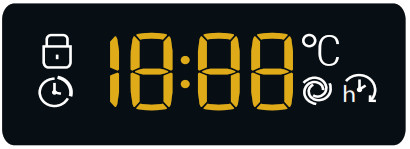
The duration of the available wash cycles and the remaining time of a running cycle appear (the display will show the maximum duration of the cycle chosen, which may decrease after several minutes since the effective duration of the programme varies depending on the wash load and the settings chosen); if the DELAY START option has been set, the countdown to the start of the selected wash cycle will appear.Pressing the corresponding button allows you to view the maximum spin speed and temperature values attained by the machine during the set wash cycle, or the values selected most recently if these are compatible with the set wash cycle.![]() Locked door indicatorWhen lit, the symbol indicates that the door is locked. To prevent any damage, wait until the symbol turns off before opening the door.To open the door while a cycle is in progress, press the START/PAUSE button
Locked door indicatorWhen lit, the symbol indicates that the door is locked. To prevent any damage, wait until the symbol turns off before opening the door.To open the door while a cycle is in progress, press the START/PAUSE button ![]()
![]()
![]()
![]()
![]()
![]()
![]()
![]()
![]()
![]()
![]()
![]()
![]()
![]()
![]()
![]()
![]()
![]()
![]()
![]()
![]()
![]()
![]()
![]()
![]()
![]()
![]()
![]()
![]()
![]()
![]()
![]()
![]()
![]()
![]()
![]()
![]()
![]()
![]()
![]()
![]()
![]()
![]()
![]()
![]()
![]()
![]()
![]()
![]()
![]()
![]()
![]()
![]()
![]()
![]()
![]()
![]()
![]()
![]()
![]()
![]()
![]()
![]()
![]()
![]()
![]()
![]()
![]()
![]()
PAUSING A CYCLETo pause the wash cycle, press the START/PAUSE ![]()
![]()
![]()
![]()
![]()
![]()
![]()
![]()
![]()
![]()
![]()
![]()
![]()
![]()
![]()
![]()
![]()
![]()
![]()
![]()
![]()
![]()
![]()
![]()
![]()
![]()
![]()
![]()
![]()
![]()
![]()
![]()
![]()
![]()
![]()
![]()
![]()
![]()
![]()
![]()
![]()
![]()
![]()
![]()
![]()
![]()
![]()
![]()
![]()
![]()
![]()
![]()
![]()
![]()
![]()
![]()
![]()
![]()
![]()
![]()
![]()
![]()
![]()
![]()
![]()
![]()
![]()
![]()
![]()
![]()
![]()
![]()
![]()
![]()
![]()
![]()
![]()
![]()
![]()
![]()
![]()
![]()
![]()
![]()
![]()
![]()
![]()
![]()
![]()
![]()
![]()
![]()
![]()
![]()
![]()
![]()
![]()
![]()
![]()
![]()
![]()
![]()
![]()
![]()
![]()
![]()
![]()
![]()
![]()
![]()
![]()
![]()
![]()
![]()
![]()
![]()
![]()
![]()
![]()
![]()
![]()
![]()
![]()
![]()
![]()
![]()
![]()
![]()
![]()
![]()
![]()
![]()
![]()
![]()
![]()
![]()
![]()
![]()
![]()
![]()
![]()
![]()
![]()
![]()
![]()
![]()
![]()
![]()
![]()
![]()
![]()
![]()
![]()
![]()
![]()
![]()
![]()
![]()
![]()
![]()
![]()
Divide the laundry according to:Type of fabric (cotton, mixed fibres, synthetics, wool, garments to be hand-washed). Colour (separate coloured garments from whites, wash new coloured garments separately). Delicates (small garments – such as nylon stockings – and items with hooks – such as bras: insert them in a fabric bag).Empty the pockets:Objects such as coins or lighters can damage the washing machine and the drum. Check all buttons.Follow the dosage recommendation / additivesIt optimizes the cleaning result, it avoids irritating residues of surplus detergent in your laundry and it saves money by avoiding waste of surplus detergentUse low temperature and longer durationThe most efficient programmes in terms of energy consumption are generally those that perform at lower temperatures and longer duration.Observe the load sizesLoad your washing machine up to the capacity indicated in the “PROGRAMME CHART” table to save water and energy.Noise and remaining moisture contentThey are influenced by the spinning speed: the higher the spinning speed in the spinning phase, the higher the noise and the lower the remaining moisture content.CARE AND MAINTENANCEFor any cleaning and maintenance, switch off and unplug the washing machine. Do not use flammable fluids to clean the washing achine.Clean and maintain your washing machine periodically (at least 4 times per year).Cutting off the water and electricity suppliesClose the water tap after every wash. This will limit wear on the hydraulic system inside the washing machine and help to prevent leaks.Unplug the washing machine when cleaning it and during all maintenance work.Cleaning the washing machineThe outer parts and rubber components of the appliance can be cleaned using a soft cloth soaked in lukewarm soapy water. Do not use solvents or abrasives.The washing machine has a “Auto-Clean” cycle for its internal parts; it must be run without any load in the drum.To optimise this cycle, it is possible to use either detergent (10% of the quantity specified for lightly soiled garments) or special additives to clean the washing machine. We recommend running a cleaning cycle every 40 wash cycles.To start the programme, close the door, turn the machine ON and press the ![]()
![]()
![]()
![]()
![]()
![]()
![]()
![]()
![]()
![]()
![]()
![]()
![]()
![]()
![]()
![]()
![]()
! Make sure that the wash cycle has ended and unplug the appliance.To access the pre-chamber:
- remove the covering panel on the front side of the machine by inserting a screwdriver in the centre and sides of the panel and using it as a lever;
- loosen the drainage pump cover by turning it anti-clockwise: it is normal for some water to leak out;
- clean the inside thoroughly;
- screw the cover back on;
- put the panel back in place, making sure the hooks slot in place before pushing the panel onto the appliance.Checking the water inlet hoseCheck the water inlet hose at least once a year. If it is cracked or broken, it must be replaced: during wash cycles, the high pressure of the water could suddenly split the hose open.! Never use hoses that have already been used.
LOAD BALANCING SYSTEMBefore every spin cycle, to avoid excessive vibrations before every spin and to distribute the load in a uniform manner, the drum rotatescontinuously at a speed that is slightly greater than the washing rotation speed. If, after several attempts, the load is not balanced correctly, the machine spins at a reduced spin speed. If the load is excessively unbalanced, the washing machine performs the distribution process instead of spinning. To encourage improved load distribution and balance, we recommend small and large garments are mixed in the load.ACCESSORIESContact our Technical Assistance Service to check whether the following accessories are available for this washing machine model.Stacking kitWith this accessory, you can secure the tumble dryer to the upper part of your washing machine to save space and facilitate loading and unloading of the tumble dryer.TRANSPORT AND HANDLINGDo not lift the washing machine by gripping it from the upper section.Unplug the appliance and close the water tap. Check that the door and detergent dispenser drawer are tightly closed. Detach the filling hose from the water tap then detach the drain hose. Empty all the water remaining in the hoses and secure the latter so that they do not get damaged during transport. Apply the transport bolts back on. Repeat, in reverse order, the transport bolt removal procedure described in the “Installation instructions”.
TROUBLESHOOTING
Your washing machine could occasionally fail to work. Before contacting the Technical Assistance Service, make sure that the problem cannot be easily solved using the following list.
| Anomalies | Possible causes / Solution |
| The washing machine does not start. | The appliance is not plugged Into the socket fully, or not enough to make contact |
| There Is no power in the house. | |
| The wash cycle does not start. | The washing machine door Is not dosed ‘None/1y. |
| The ON/Off |
|
| The START/PAUSE |
|
| The water tap has not been opened. | |
| A delay has been set for the start time. | |
| The washing machine does not fill with water reappears on the display). | The water Inlet hose Is not connected to the tap. |
| The hose Is bent. | |
| The water tap has not been opened. | |
| There Is no water supply in the house. | |
| The pressure Is too low. | |
| The START/PAUSE |
|
| The washing machine continuously loads and unloads water. | The drain hose Is not fined between 65 and 100 cm from the floor. |
| The free end of the hose is immersed In the water. | |
| The wall drainage system is not fitted with a breather pipe.If the problem persists even after these checks, turn off the water tap, switch the appliance off and contact the Technical Assistance Service. If the home Is on one of the upper floors of a building, there may be problems relating to the back. siphonage. causing the washing machine to fill with water and drain continuously. Special anti-siphon valves are available in shops and help to prevent this Inconvenience. | |
| The washing machine does not drain or spin. | The cycle does not include drainage. with certain cycles, It must be started manually. |
| The drain hose Is bent. | |
| The drainage duct is clogged. | |
| The washing machinevibrates a lot during the spin cycle. | The drum was not unlocked correctly during installation. |
| The washing machine is not level. | |
| The washing machine Is tucked between furniture cabinets and the wall. | |
| The washing machine leaks. | The water inlet hose is not screwed on properly. |
| The detergent dispenser drawer is obstructed | |
| The drain hose Is not properly attached. | |
| The-Options” and START! PAUSE plip Indicator lights Rash rapidly and the display visualises an error code (e.g.: F-01, F-…). | Switch off the machine and unplug It wait for approximately I minute and then switch it beckon again. If the problem persists, contact the technical Assistance Service. |
| There Is too much foam. | The detergent Is not suitable for machine washing (it should display the text “for washing machines’ or hand and machine wash; or the like). |
| Too much detergent was used. | |
| After pressing the START/PAUSE |
See’DEMOMODE’ |
DEMO MODE: to deactivate this function, switch the washing machine OFF. Then press and hold “Start/Pause” ![]()
![]()
![]()
![]()
![]()
![]()
![]()
![]()
![]()
![]()
![]()
![]()
![]()
![]()
![]()
![]()
![]()
![]()
![]()
![]()
![]()


You can download the SAFETY AND INSTALLATION INSTRUCTIONS, TECHNICAL SHEET and ENERGY DATAby:
- Visiting the website http://docs.hotpoint.eu.
- Using the QR code.
- Alternatively, contact our Technical Assistance Service (the telephone number is indicated in the warranty booklet). When contacting the Technical Assistance Service, provide the codes shown on the adhesive label applied to the inside of the door.
For User’s Repair & Maintenance Information visit www.hotpoint.eu.The model information can be retrieved using the QR-Code reported in the energy label. The label also includes the model identifier that can be used to consult the portal of the registry at https://eprel.ec.europa.eu
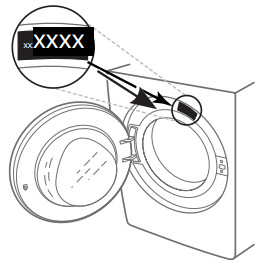

400011549222
References
[xyz-ips snippet=”download-snippet”]

